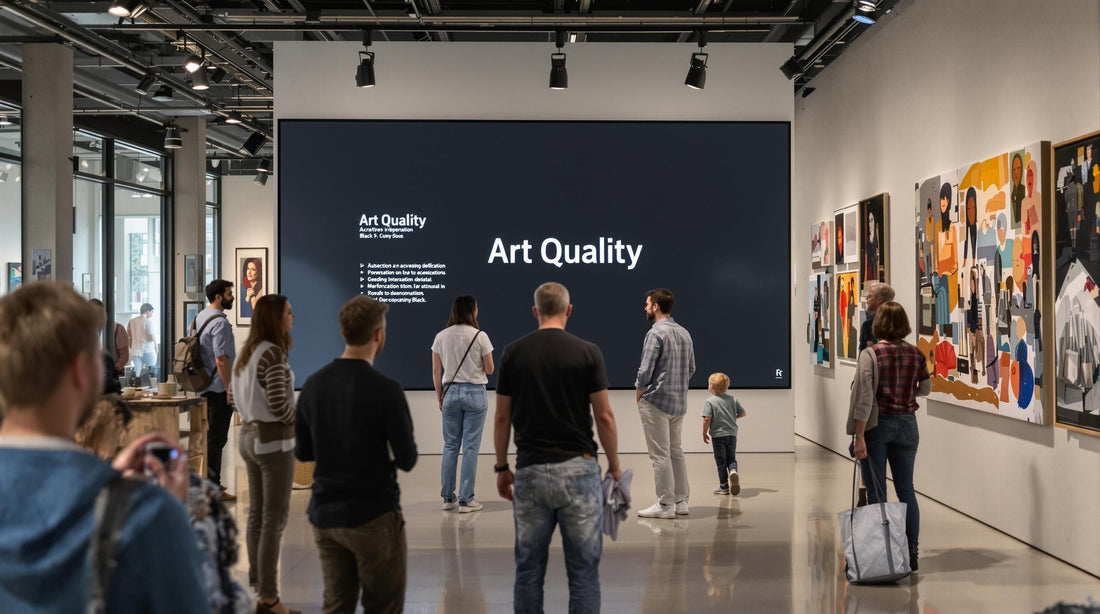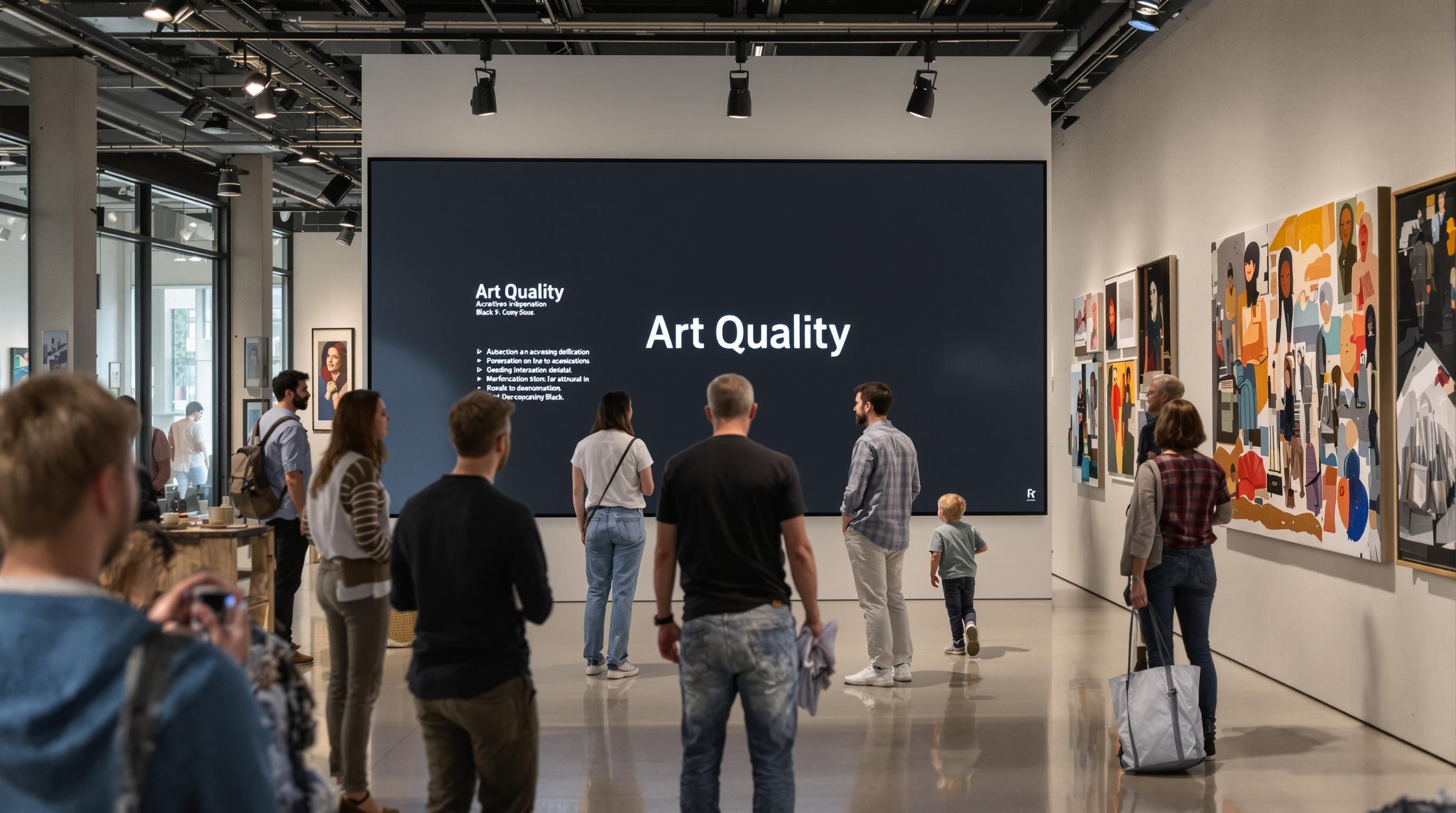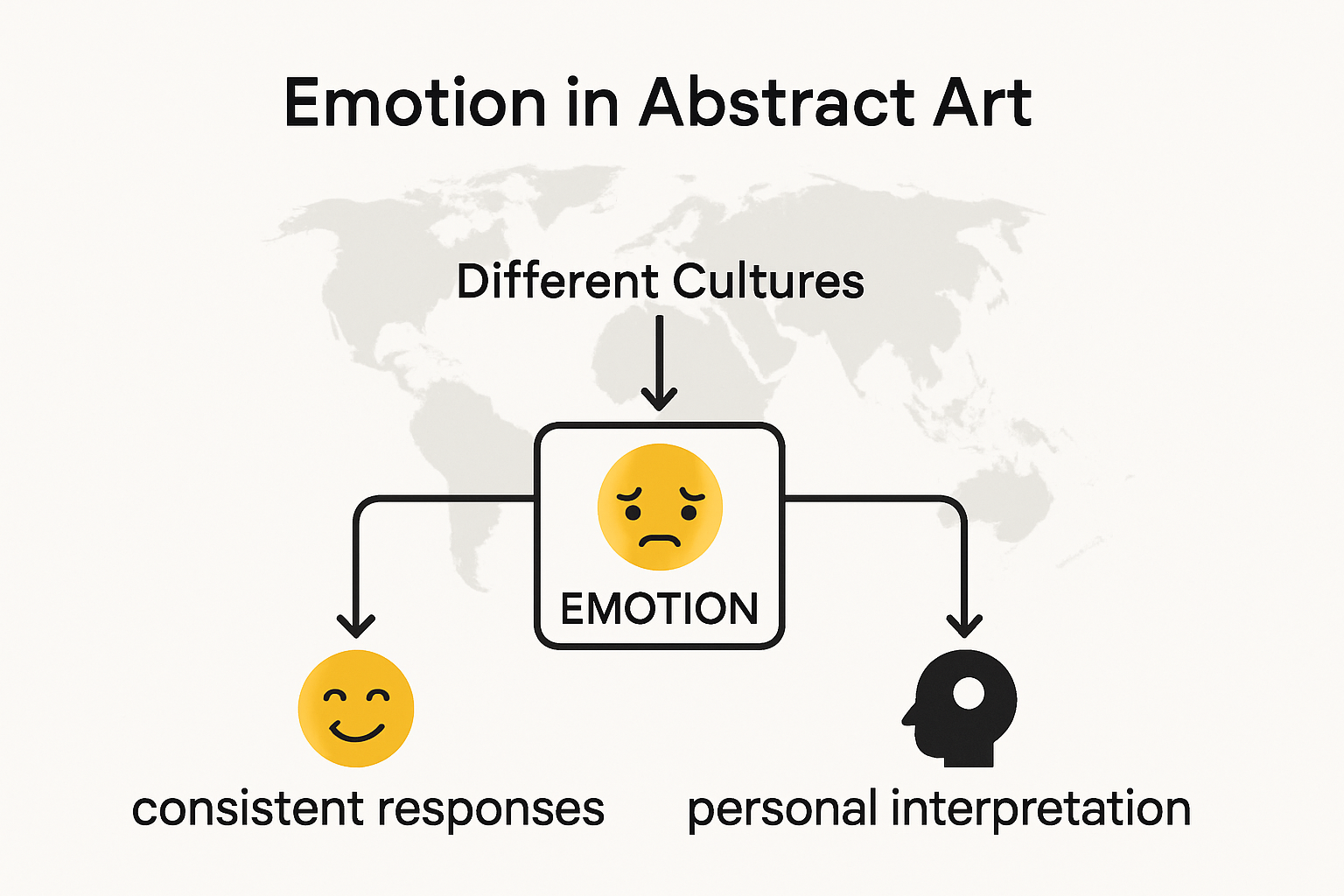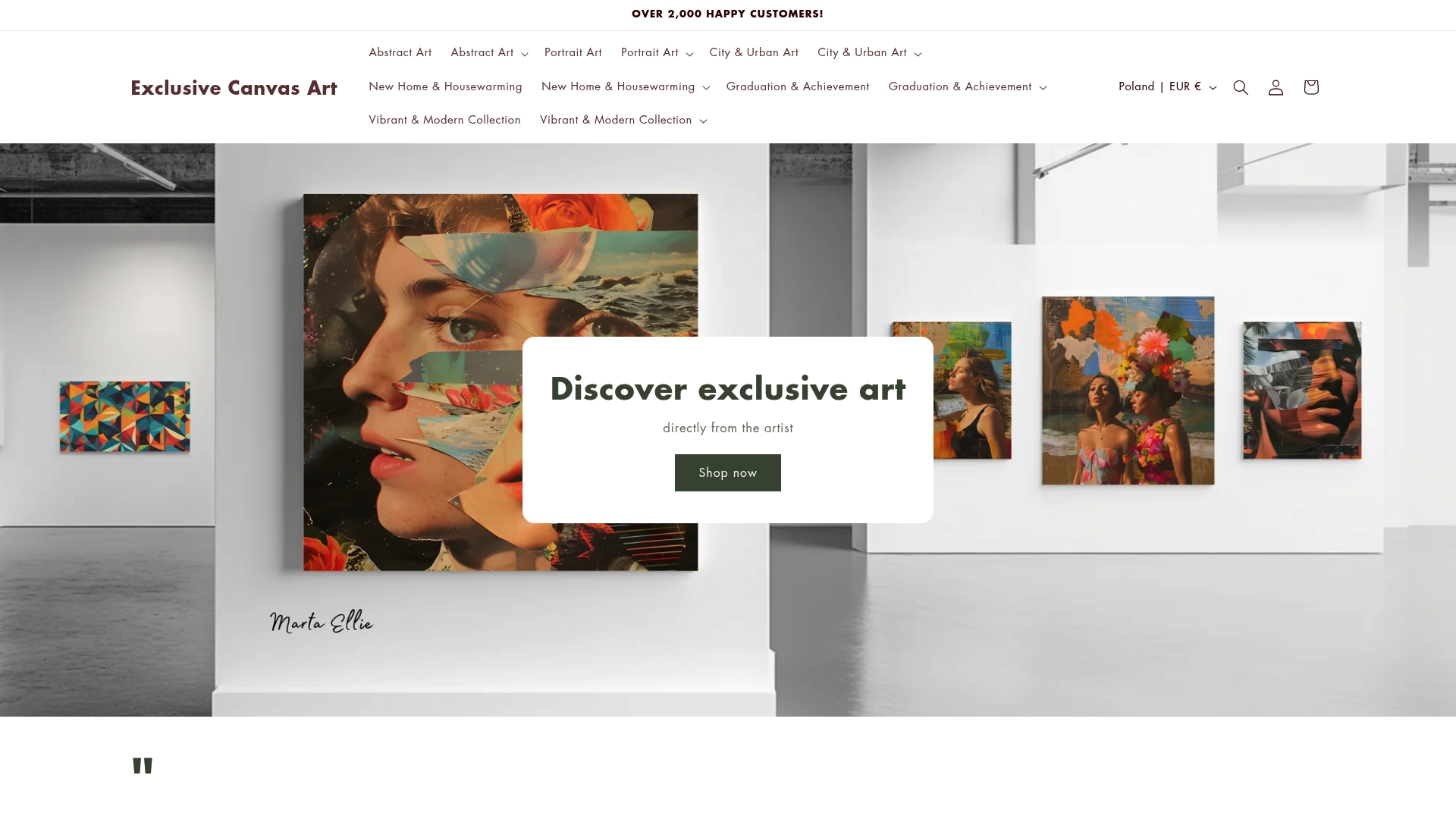
How to Evaluate Art Quality: Expert Tips for 2025

People often think art quality is just about taste or having a trained eye, but there is real science behind what makes an artwork stand out. One study found that knowing the story behind an artwork can actually change your brain’s response and increase your emotional engagement by over 50 percent. What most people miss is that the best art isn’t just about beauty or skill—it connects with you on a deep, emotional level before you even realize it.
Table of Contents
- Key Factors That Define Art Quality
- Visual and Emotional Impact in Modern Art
- Practical Tips for Choosing Wall Art Canvas
- Supporting Independent Artists and Making Smart Purchases
Quick Summary
| Takeaway | Explanation |
|---|---|
| Evaluate technical proficiency first | Assess an artist’s skill in composition, color, and execution to determine quality. |
| Prioritize conceptual originality | Look for artworks that offer new perspectives and emotional depth, pushing creative boundaries. |
| Consider emotional resonance | Choose pieces that evoke genuine feelings and connect with your personal experiences. |
| Support independent artists ethically | Purchase directly from artists to ensure fair compensation and acknowledgment of their work. |
| Invest in emerging talents | Identify and support artists with unique styles, contributing to their growth and the future value of the art. |
Key Factors That Define Art Quality
Understanding art quality requires a nuanced approach that goes beyond subjective impressions. Professional art evaluators and collectors consider multiple critical dimensions when assessing an artwork’s intrinsic value and aesthetic merit.
Technical Mastery and Execution
The foundation of art quality lies in technical proficiency. Artistic skill manifests through precise brushwork, sophisticated color theory, and masterful composition. Professionals from the Metropolitan Museum of Art emphasize that technical excellence demonstrates an artist’s deep understanding of their chosen medium. This includes evaluating line work, perspective, texture manipulation, and the artist’s ability to create visual depth and emotional resonance.
Professional artists invest years developing techniques that transform raw materials into compelling visual narratives. Technical mastery isn’t just about mechanical precision but about communicating complex emotions and perspectives through skillful execution. Whether it’s watercolor, oil painting, digital art, or sculpture, each medium demands unique technical competencies.
Conceptual Originality and Creative Vision
Beyond technical skills, art quality fundamentally depends on conceptual innovation. Research from the Tate Modern suggests that groundbreaking artwork challenges existing perceptions and introduces novel perspectives. True artistic quality emerges when creators transcend conventional boundaries, offering fresh interpretations of human experience.
Conceptual originality involves several key elements:
- Unique Perspective: Presenting familiar subjects through unexplored lenses
- Emotional Complexity: Capturing nuanced human experiences
- Cultural Relevance: Reflecting contemporary social dynamics
- Intellectual Stimulation: Provoking thoughtful reflection
Artists who demonstrate these qualities create works that resonate beyond immediate visual appeal, engaging viewers intellectually and emotionally.
Authenticity and Emotional Resonance
Ultimately, art quality is profoundly connected to an artwork’s ability to establish genuine emotional connections. The most compelling pieces transcend technical perfection, communicating universal human experiences with raw authenticity. This involves creating visual language that speaks directly to viewers’ lived experiences, memories, and inner landscapes.
Authentic art reveals the artist’s unique voice and perspective. It challenges viewers, evokes powerful emotions, and creates immersive experiences that transform passive observation into active engagement. Whether through abstract representation or hyper-realistic portrayal, high-quality art maintains an intrinsic emotional integrity that distinguishes it from mere decorative objects.
For art enthusiasts seeking deeper understanding, our comprehensive guide on art evaluation offers additional insights into distinguishing exceptional artwork from ordinary visual productions.
Visual and Emotional Impact in Modern Art
Modern art transcends traditional aesthetic boundaries by creating profound visual and emotional experiences that challenge viewers’ perceptions and engage their sensory understanding. The emotional resonance of contemporary artworks goes far beyond mere visual representation, transforming spaces and psychological landscapes.
Neurological Responses to Visual Stimuli
Research from the National Center for Biotechnology Information reveals that contextual information significantly enhances viewers’ emotional engagement with artworks. The study demonstrates that providing background about an artwork’s creation can dramatically alter emotional responses, increasing feelings of pleasure, inspiration, and enlightenment.
Neural studies indicate that abstract and modern art stimulate complex brain regions responsible for emotion processing and aesthetic appreciation. When viewers encounter innovative visual compositions, their brains activate multiple sensory and cognitive networks simultaneously. This neurological engagement explains why certain artworks can evoke intense emotional reactions that seem disproportionate to their visual complexity.
Emotional Perception and Artistic Expertise
PubMed research highlights fascinating differences in how art experts and non-experts perceive emotional content in modern art. Professional artists and trained observers demonstrate enhanced visual processing capabilities, allowing them to extract deeper emotional nuances from abstract compositions.
These findings suggest that emotional impact is not solely dependent on representational accuracy but on the artwork’s ability to communicate complex psychological states through visual language. Key emotional transmission mechanisms include:
- Color Psychology: Utilizing color palettes that trigger specific emotional responses
- Compositional Tension: Creating visual dynamics that mirror psychological states
- Symbolic Representation: Embedding metaphorical elements that resonate with universal human experiences
Cultural and Personal Interpretation

ScienceDirect research demonstrates that abstract art allows for remarkably consistent emotional perception across different cultural backgrounds. This suggests that certain visual features can communicate emotional states objectively, transcending linguistic and cultural barriers.
Modern art’s emotional impact stems from its capacity to invite personal interpretation. Each viewer brings their unique emotional landscape, transforming the artwork into a dynamic, interactive experience. This participatory aspect distinguishes contemporary art from more traditional, prescriptive visual representations.
For art enthusiasts interested in deeper exploration of emotional connections through art, our guide on art and emotional well-being offers comprehensive insights into selecting artwork that transforms living spaces and personal experiences.
Practical Tips for Choosing Wall Art Canvas
Selecting the perfect wall art canvas requires a strategic approach that balances aesthetic appeal, personal style, and spatial considerations. The right artwork can transform a room, creating emotional depth and visual harmony that reflects your unique personality and design sensibilities.
Evaluating Composition and Visual Balance
According to the National Art Standards, developing robust criteria for art evaluation is crucial. When choosing a wall art canvas, consider the artwork’s compositional elements and how they interact with your existing space. This involves analyzing several key aspects:
- Spatial Proportion: Ensure the canvas size complements your wall dimensions
- Color Harmony: Select artwork that coordinates with your room’s color palette
- Visual Weight: Balance the artwork’s visual impact with surrounding decor
The Four-Step Critique Method developed by Edmund Feldman provides a systematic approach to assessing artwork. This method encourages viewers to move beyond initial impressions and deeply analyze an artwork’s technical and emotional qualities.
To help you compare the main criteria for evaluating wall art canvas, the table below organizes the key compositional and visual balance aspects mentioned in this section:
| Criteria | Description |
|---|---|
| Spatial Proportion | Canvas size complements wall and room dimensions |
| Color Harmony | Artwork coordinates with room’s color palette |
| Visual Weight | Balance with surrounding décor and furniture |
| Focal Point | Clear visual center of interest in the composition |
| Flow & Movement | Guides viewer’s eye smoothly across the artwork |
Technical Quality and Material Considerations
Beyond aesthetic appeal, the technical execution of a canvas print significantly impacts its long-term value and visual performance. Professional art collectors recommend examining several critical technical aspects:
- Print Resolution: Higher resolution ensures crisp, detailed imagery
- Canvas Material: Premium cotton or poly-cotton blends offer superior durability
- Printing Technique: Archival-quality prints preserve color integrity
- Framing and Mounting: Professional stretching prevents warping and maintains artwork tension
Quality canvas prints should demonstrate meticulous attention to detail, with vibrant colors that remain true to the original artwork. The substrate’s texture and the printing process’s precision directly influence the artwork’s visual impact and longevity.
Personal Connection and Emotional Resonance
ArtBound highlights that beyond technical metrics, an artwork’s most critical attribute is its ability to create an emotional connection. When selecting a wall art canvas, prioritize pieces that resonate with your personal experiences, aesthetic preferences, and emotional landscape.
Consider these emotional selection criteria:
- Personal Narrative: Choose artwork that tells a story meaningful to you
- Emotional Trigger: Select pieces that evoke positive memories or feelings
- Inspirational Quality: Opt for art that motivates or uplifts your mood
For art enthusiasts seeking more comprehensive guidance, our expert guide on choosing artwork provides in-depth strategies for selecting wall art that transforms living spaces. By understanding these nuanced selection principles, you can curate a personal art collection that is both visually stunning and emotionally compelling.
Supporting Independent Artists and Making Smart Purchases
Supporting independent artists requires a nuanced approach that balances appreciation for creative expression with intelligent purchasing strategies. By understanding the complex ecosystem of artistic production, collectors can make meaningful contributions to individual artists’ careers while building a thoughtful and valuable art collection.
Understanding Artist Valuation and Market Dynamics
The Kennedy Center’s art critique guidelines emphasize the importance of evaluating art through its fundamental elements like balance, rhythm, and texture. When supporting independent artists, these technical considerations become crucial in determining an artwork’s potential value and authenticity.
Independent artists often navigate challenging economic landscapes, making informed purchasing decisions critical. Key considerations include:
- Artist Background: Research the artist’s education, exhibitions, and professional trajectory
- Artistic Consistency: Evaluate the artist’s stylistic development and thematic coherence
- Unique Perspective: Identify artists offering innovative visual narratives
The following table organizes these key factors to consider when evaluating and supporting independent artists:
| Key Consideration | What to Look For |
|---|---|
| Artist Background | Education, exhibitions, career trajectory |
| Artistic Consistency | Stylistic development, recurring themes, quality over time |
| Unique Perspective | Innovation, original visual storytelling |
| Technical Elements | Balance, rhythm, texture in the artist’s body of work |
Ethical Purchasing and Fair Compensation
Following the ‘See Think Wonder’ method, art enthusiasts can develop a more profound understanding of an artwork’s context and meaning. This approach goes beyond transactional interactions, encouraging meaningful engagement with artists’ creative processes.
Ethical art purchasing involves:
- Direct Artist Support: Purchase directly from artists when possible
- Fair Pricing: Recognize the labor and creativity invested in each piece
- Transparent Transactions: Understand licensing, reproduction, and ownership rights
Long-Term Investment and Artist Development
Self-evaluation techniques in art reveal the importance of continuous growth and reflection. By supporting emerging artists, collectors contribute to their professional development while potentially acquiring artworks with significant future value.
Strategic art investment involves:
- Emerging Talent Recognition: Identify artists with distinctive styles and potential
- Diversified Collection: Support artists from varied backgrounds and disciplines
- Documentation: Maintain detailed records of purchases and artist information
For art enthusiasts seeking deeper insights into building meaningful art collections, our comprehensive guide for collectors offers expert strategies for making informed and impactful art purchases. By approaching art collection as a collaborative journey with artists, collectors can create rich, meaningful collections that celebrate creativity and individual expression.

Frequently Asked Questions
What are the key factors in evaluating art quality?
The key factors in evaluating art quality include technical mastery and execution, conceptual originality and creative vision, and authenticity with emotional resonance. Each of these elements contributes to an artwork’s intrinsic and aesthetic value.
How can emotional resonance influence art appreciation?
Emotional resonance is crucial in art appreciation as it establishes genuine connections between the artwork and the viewer. Pieces that evoke strong feelings or relate to personal experiences tend to be more impactful and memorable.
What should I consider when choosing wall art for my space?
When choosing wall art, consider factors such as composition and visual balance, technical quality and materials, and how the artwork resonates with your personal taste and emotions to ensure it enhances your space effectively.
How can I support independent artists when purchasing art?
You can support independent artists by buying directly from them, ensuring fair compensation for their work, understanding their backgrounds and artistic consistency, and recognizing the value in their unique perspectives to help them grow professionally.
Bring Art Quality Home with Marta Ellie’s Exclusive Canvas Collections
Have you ever struggled to find art that truly resonates and meets your high standards for both emotional impact and technical mastery? The article highlighted how challenging it can be to measure authenticity, originality, and those subtle details that separate good art from unforgettable masterpieces. If you want to experience the difference for yourself, explore our Art Gallery Opening Night Wall Art collection. Every piece reflects Marta Ellie’s unique vision, impeccable technique, and powerful storytelling that were outlined as key factors in evaluating art quality.

Discover artwork that will transform your space and connect with you on a deeper level. Start your journey with Marta Ellie’s dedicated online gallery at https://martaellie.com and see why collectors trust her creations to elevate their environments. Shop today and bring home a canvas that meets the standards discussed in our expert guide.
Recommended
- What Makes Art High Quality: Guide for Collectors & Decorators 2025 – Exclusive Canvas Art
- Art Appreciation Basics: A Guide for Collectors and Decorators 2025 – Exclusive Canvas Art
- Contemporary vs Modern Art: Guide for Collectors & Decorators 2025 – Exclusive Canvas Art
- Understanding Art Composition: A 2025 Guide for Collectors and Decorat – Exclusive Canvas Art